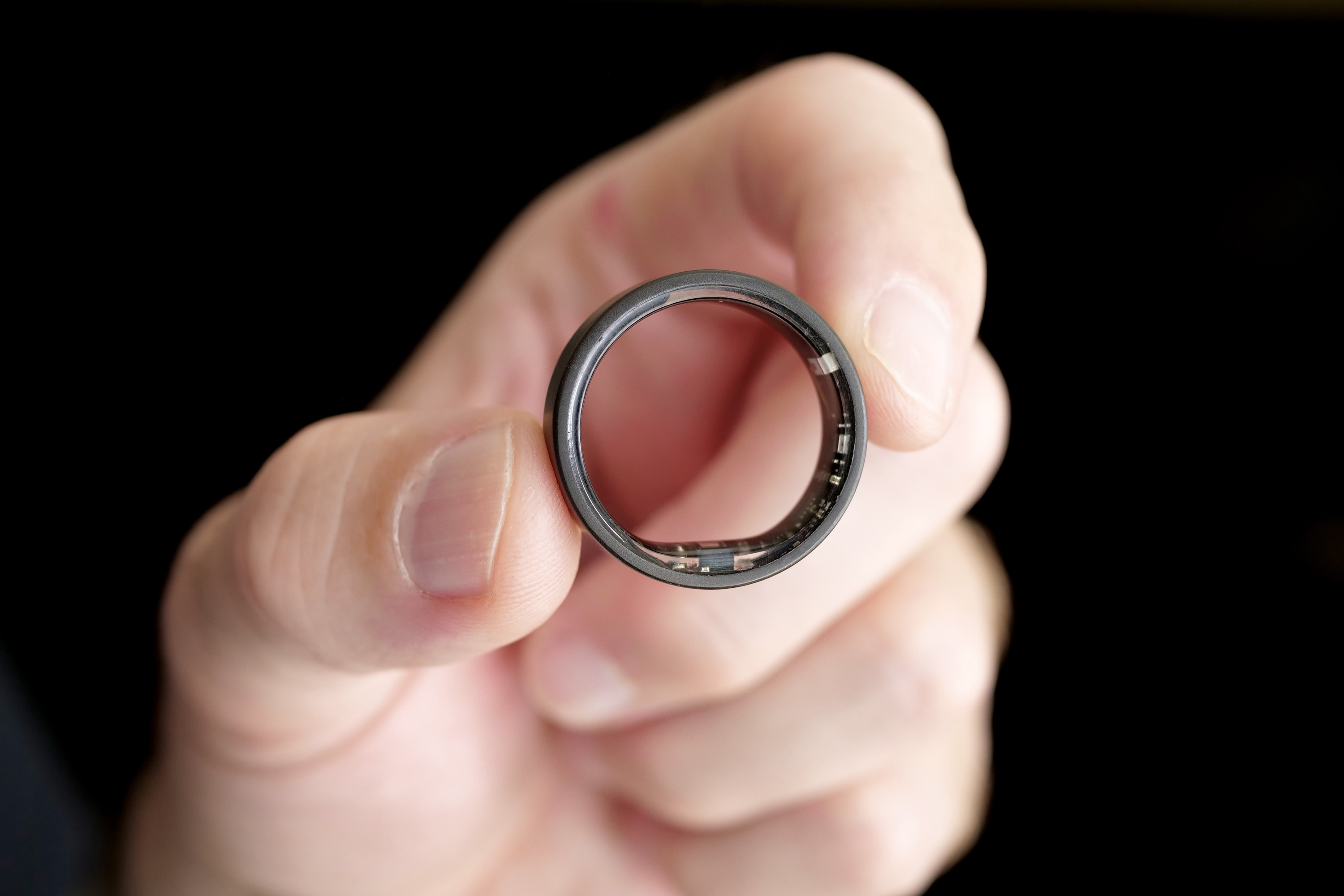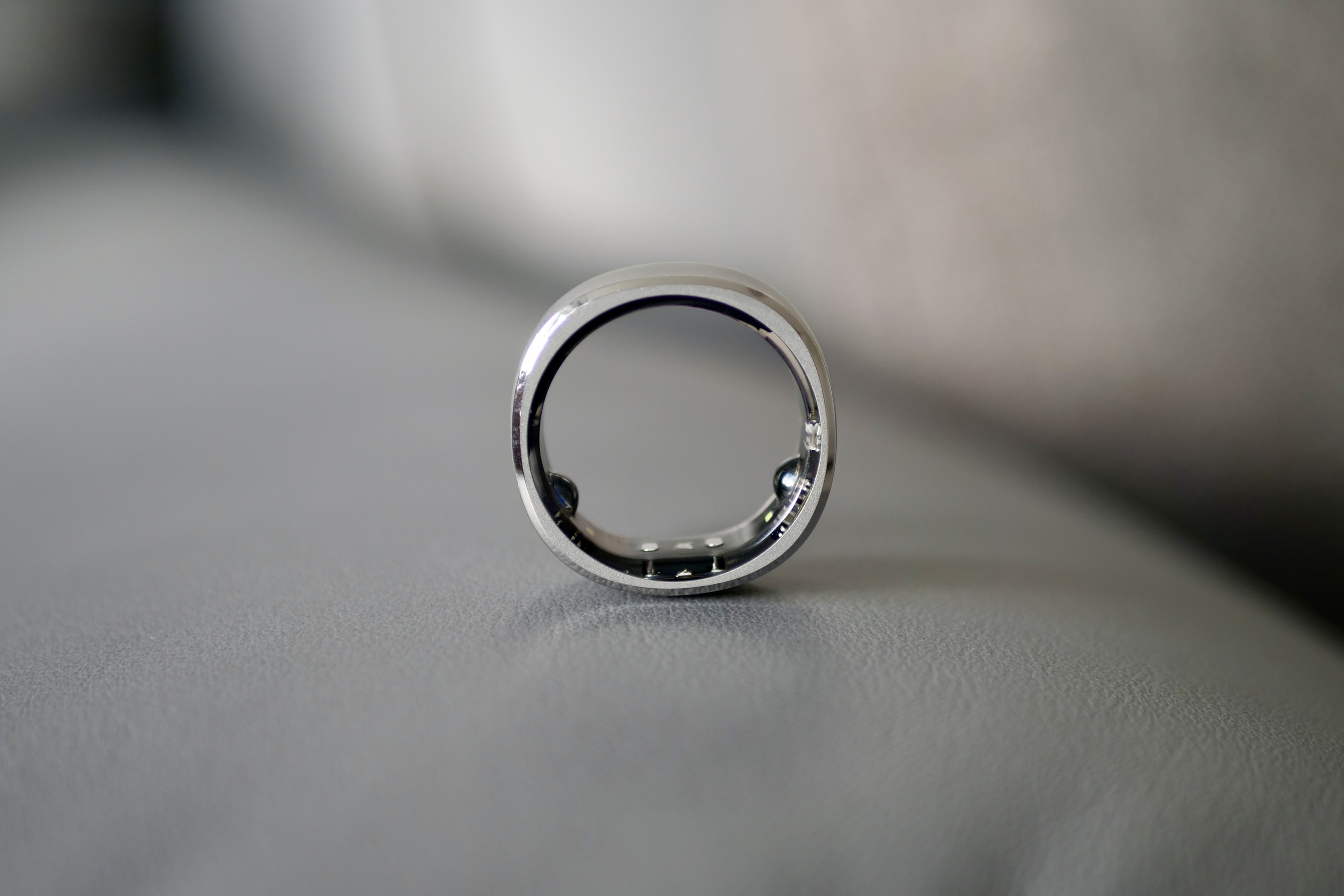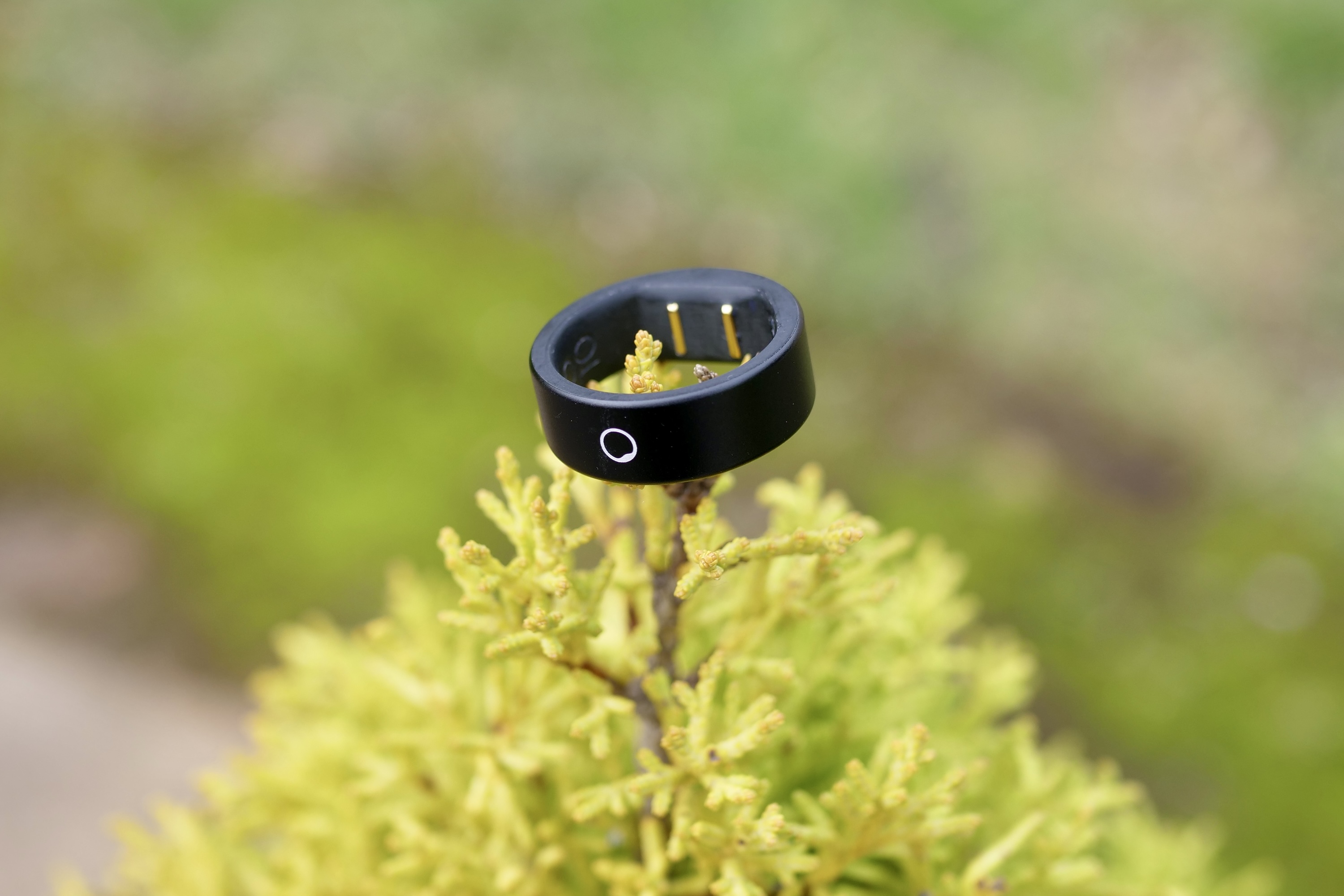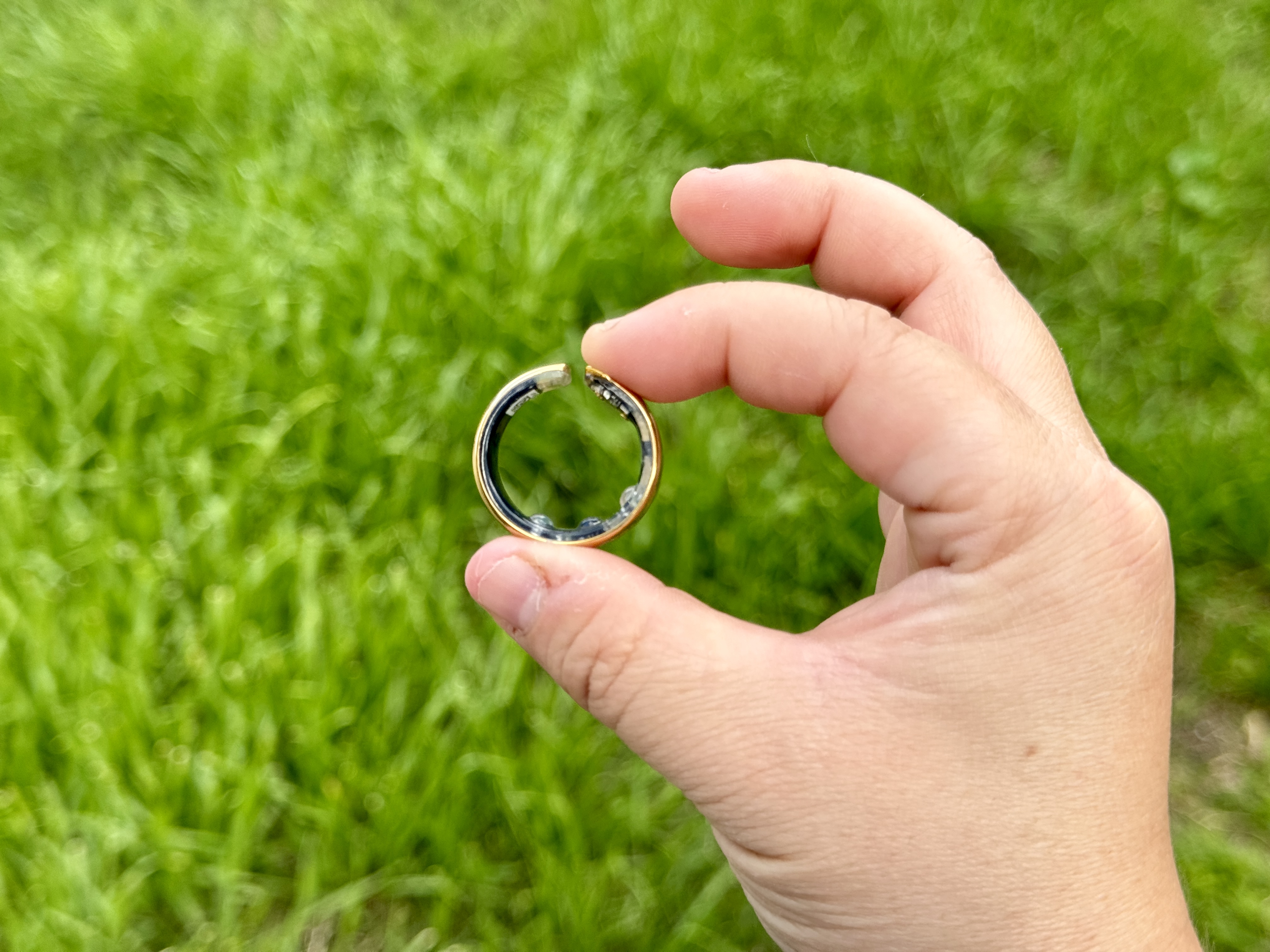“The Oura Ring's beautiful design, high-quality build, informative app, good battery life, and overall simplicity set it apart from other health and activity trackers.”
- Beautiful design
- Lightweight and comfortable
- Informative and easy to use app
- Accurate sleep tracking
- Wear-and-forget battery life
- Convenient charging
- Subscription required for app access
- No general fitness tracking
- Some people will need a smartwatch too
This review has been a long time in the making. I have worn the third-generation Oura Ring since the end of 2021, starting with the gloss black Heritage version before moving on to the polished silver Horizon model in 2022. Now, in mid-2024 I’ve recently passed my third anniversary collecting data using an Oura Ring.
That’s a lot of experience, and there were only a few short breaks during that time when I wore other smart rings to review. I think I’m in the perfect position to say whether it’s worth buying. I can confidently say that it is, but there are some things you really need to understand about it first.
About our Oura Ring review
Our Oura Ring third-generation review was first published in June 2023, and at the time, I had worn the Oura Ring for 18 months. I am updating the review in June 2024, adding a year to my experience with the third-generation Oura Ring. Previously, I had worn the previous generation Oura Ring models for approximately a year.
A new section has been added below to bring our review up to date. The original review has been altered to reflect any changes, but the overall score has not changed. Toward the end of the review, a new section explains the various competitors that have been released over the past year.
What’s the Oura Ring like in 2024?

You can read some more in-depth comments about using the Oura Ring in 2024 in a separate story here, and also more about the product itself below. But I want to highlight something that I think really emphasizes how much I like it. I have worn four different smart rings over the past year and have access to various smartwatches and fitness trackers, yet I have not abandoned the Oura Ring for any of them. Additionally, due to the nature of my job, I rarely stick with one device for the long term. Yet here I am, still wearing the Oura Ring a year after I first wrote this review, which was already 18 months into my use of it.
That’s serious staying power, especially for someone who expects to use newer and better products on a very regular basis, and it should tell you a great deal about how impressive the Oura Ring is. I don’t think the Oura Ring has been bettered, and in fact, its rivals — from the Ultrahuman Ring Air to the Circular Ring Slim — haven’t come close. Part of what makes me recommend the Oura Ring so readily is its simplicity, from understanding the data presented in the slick and fast app to the convenient charging plinth that helps you avoid letting the battery run too low.
Oura has also steadily added new features to the app, helping to justify the monthly subscription cost. Yes, you still have to pay to see most of the data in the app. However, after seeing and using the apps that come with other smart rings, the Oura app is worth the cost. It’s a lot more intuitive, with clearly presented and very helpful data. I rate it as highly as Apple’s Ring system for motivation and Fitbit’s latest app layout for visual simplicity. The app is as important as the hardware, and both are winners here. But how long will Oura rule the (smart) rings? It’s about to face its most serious challenge yet, as the Galaxy Ring is here, and Samsung already knows what it’s doing with health and fitness products. For now, though, if you want to buy a smart ring, the Oura Ring is my only recommendation.
What is the Oura Ring?
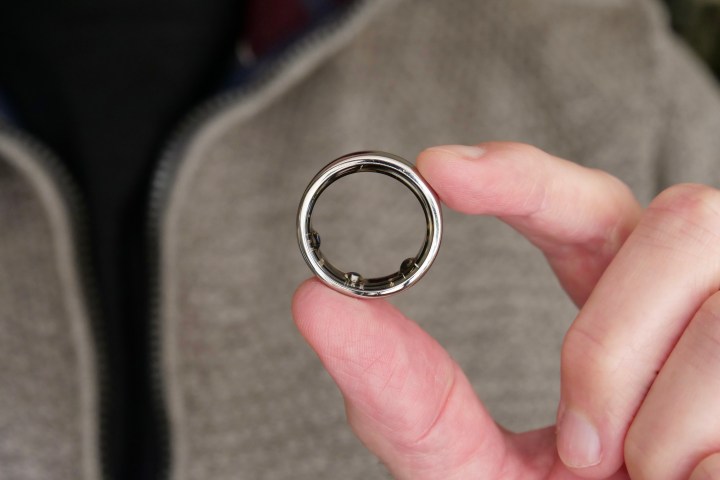
Before I get into the functionality, design, and cost of the Oura Ring, it’s worth explaining what it actually is, as it’s too easy to think that the Oura Ring is just a posh fitness tracker — but that’s not really correct. Understanding what it is, what it tells you, and how it fits into your life is very important to know if it’s worth the investment and if it’s going to suit you personally.
It’s not a Fitbit or an Apple Watch — it’s smart jewelry that’s as much about your lifestyle as it is about tracking your activity. If you want a device that’s going to help you train better or prepare for a triathlon on its own, the Oura Ring is not the device for you. Similarly, if you want notifications from your phone, this isn’t what you want either.

Instead, the Oura Ring tracks your sleep, heart rate, blood oxygen, heart rate variability (HRV), and other metrics (plus data collected from general exercise and activity) to provide an overview of your daily health and readiness. Insights into this data help you plan for the day and understand where you can make improvements. Its closest non-smart ring competitor is the Whoop 4.0, another screenless tracker that highlights design, but its forte is exercise, fitness, and working toward improving yourself in these areas.
This is why the Oura Ring suits me better personally. I’m not interested in running faster or crushing every goal to push my body to the limit. What I am interested in is using data to make changes to my lifestyle and activity routine to keep me healthy and watching over trends to isolate situations that negatively affect my daily performance. I want to do this with a device that’s low maintenance and has a great design. The Oura Ring excels at this.
Oura Ring: design
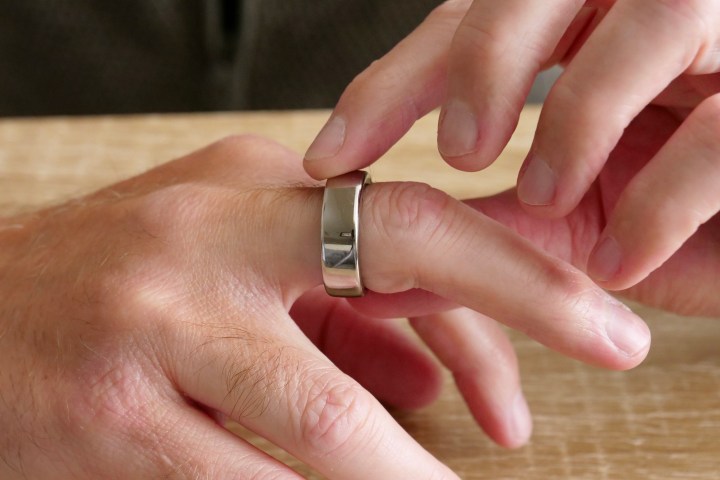
When I first wore an Oura Ring, I was concerned about comfort, as I’d never felt happy wearing a ring before. The prospect of wearing one 24 hours a day for years seemed unpleasant, as well as quite unlikely. However, it hasn’t been a problem at all. Oura supplies a sizing kit with plastic recreations of its rings, so you can try out different sizes to see which is the most comfortable. This is the best way to understand which one is right, and although you can base it on your existing ring size or buy one off the shelf in Best Buy today, I really recommend living with a fake plastic one for 24 hours first. If you accidentally get the wrong size, it’ll ruin the experience entirely.
The Oura Ring has become part of me, and I have no reason to take it off.
There’s a choice of two designs. The full circular Horizon or the Heritage model, which has a flat section to give it some character. I’ve worn both types, and there’s no difference in comfort or feel. Both look great, and I have really been taken with the polished silver Horizon version, which is surprisingly subtle, yet still glints in the sunlight. Like any good piece of jewelry, the Oura Ring has become part of me, and I have no reason to take it off from a style perspective.

Each model is made from titanium, with a non-metallic inner section, and it has never caused any skin irritation for me. All the Oura Rings I’ve worn have picked up scratches and marks, but none have dramatically detracted from the appearance. The worst offender was the matte Stealth version, where the finish did chip a little. Even after two years, the polished silver version still looks good, as the minute scratches and scuffs can’t be seen from a distance. The Oura Ring is water resistant to 100 meters.
The size doesn’t change the basic dimensions of the Oura Ring, which is 7.9mm across and 2.55mm thick. The weight varies between four grams and six grams, and I almost don’t notice it’s there. Initially, you will notice the thickness between your fingers, perhaps less so if you regularly wear rings, but it soon disappears. I think I’ve happily worn an Oura Ring for two-and-a-half years, and if that’s not a solid endorsement of design, quality, comfort, wearability, and durability, I don’t know what is.
Oura Ring: technology, sensors, and activity tracking
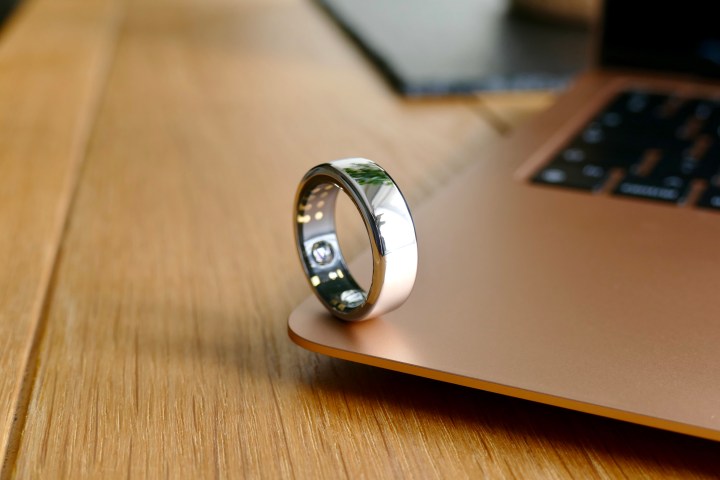
The Oura Ring is primarily a lifestyle-based sleep tracker, with added features for basic fitness tracking and period prediction, along with some guided mediations and unique features such as the ability to sync with the Natural Cycles birth control app. It does not have a screen, it doesn’t alert you about notifications from your phone, and it’s not the device to track activities like golf, or provide deep insights about your marathon performance.
For such a small device, it packs in a surprising amount of tech. Sensors measure your heart rate, blood oxygen levels, and skin temperature, along with your movement too. It connects to the Oura app on your phone using Bluetooth and syncs with Apple Health and Google Fit, so data collected from another device is taken into account by the Oura Ring (and vice versa). I have only used the Oura Ring connected to an Apple iPhone, and the app and Bluetooth syncing has been practically flawless. It’s also fast, and your data is transferred and visible in seconds.

Oura’s way of presenting its data in the app is simple, yet incredibly informative when you dig deeper. Neither Apple’s Health app or Google Fit have the same at-a-glance convenience of Oura’s Readiness, Sleep, and Activity scores. These are based on data collected from your sleep and daily movement, and you can instantly see how you’re set up for the day, how good your sleep was, if you need time to recover, and where you need to improve. All from just three primary numbers. It’s excellent.
It can track three primary activities — walking, running, and cycling — using steps and heart rate, plus GPS location from your phone. You can also manually add in a non-tracked activity, but it’s not ideal, and it does pull in activities tracked by Apple Health and Google Fit and add them to your daily scores. I’ve found the automatic workout detection to be accurate and reliable. It also has an activity mode no other fitness tracker has — housework. It picks this up automatically, and it’s shockingly accurate. All movement that raises your heart rate makes a difference, and it’s a very welcome addition to the Oura Ring’s activity tracking.
Oura Ring: sleep and activity data
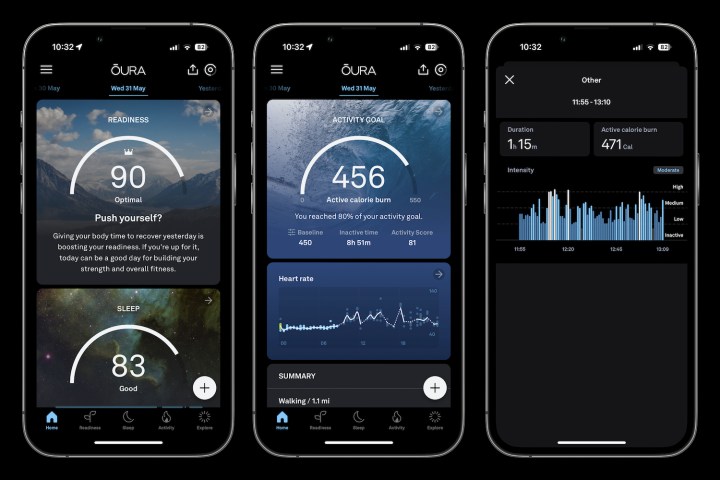
The Oura app presents data very clearly, with large and obvious numbers, scores, and graphs to illustrate your performance. All sections have additional data when you dig deeper, and the more you wear the Oura Ring, the more it understands you. The trends make a real difference not just to its recommendations, but also to how you personally understand your body. Its sleep staging algorithm is detailed and accurate, and it has unique data points, including your chronotype, so you can better understand sleep habits.
I can see my Heart Rate Variability (HRV) long-term and how it changes with my activity and stress levels, and even confirm how I feel in the mornings using it. The HRV, resting heart rate, and respiratory rate figures give a really great indication of how well recovered you are, and I’ve grown to recognize and understand the signs of exhaustion through them. My long-term use enabled me to see how stress affected my body, which helped me confront my situation. In turn, the app’s Readiness score usually backs it up by saying I’m either looking good for the day, or I should take it easy. There’s even a Rest Mode that adjusts your daily goals accordingly, and is recommended by the ring when it notices you’re not at your best.
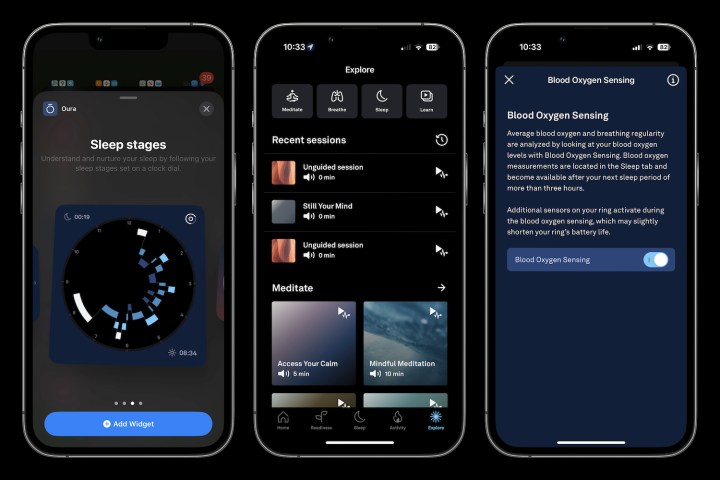
The Oura Ring does tend to overestimate step count, but the heart rate and calorie burn — a metric that can be hidden entirely if you prefer — matches other devices, and its overall sleep tracking data has become even more accurate over time, as the company refines its algorithm. It automatically tracks sleep, and is very effective at knowing when you’re sleeping or awake. It neatly takes this into consideration when presenting its Sleep score, something not all devices do. Some include the time you spend awake in bed as “sleep,” which can skew results.
The app generates reports on a regular basis, highlighting your trends over set periods of time, which are presented very well and are very informative. The Oura Ring isn’t a medical device, so it stops short of making actual recommendations or analysis, but it’s good at balancing its interpretation of your data between being too general or glossing over key points. It means I understand what it says, and potentially act on it too.
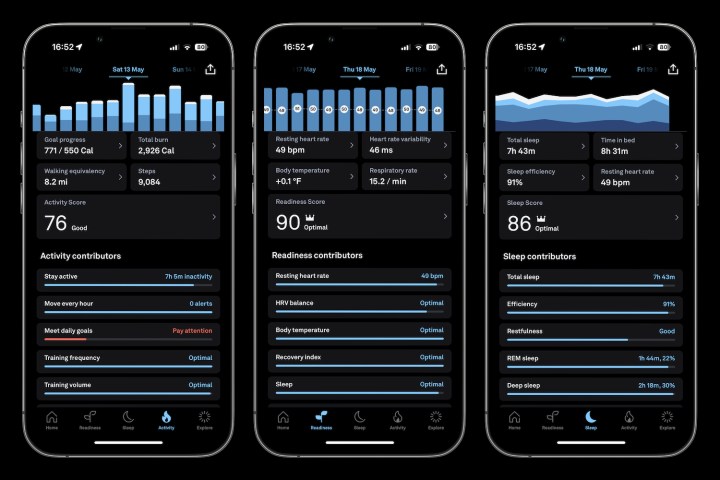
I like that the Oura Ring isn’t intrusive either. It doesn’t send dozens of notifications or constantly badger me to do something. It will prompt me to get up and move around, but that’s all. This lack of interruption is enhanced by its lack of a screen, so there’s never any visual push to up your step count or beat a personal best. While I find this a benefit, others will want the motivation, which may mean this isn’t a device for them. Remember, this isn’t a fitness tracker in the way a Fitbit or Apple Watch is.
Oura Ring: what isn’t so good?

While Oura has stepped up its efforts to deliver new features that increase value, some promised features are still missing. A general, catch-all fitness-tracking mode would greatly enhance the ring’s usefulness, but one still hasn’t been released. I now doubt such a thing is coming at all. This brings up the question of whether the Oura Ring is enough of a health and activity tracker on its own, and it may not be quite feature-rich enough for some people.
The solution is to also wear a smartwatch or a fitness tracker, but it’s a big financial commitment to buy one along with the Oura Ring. However, in its current form, the Oura Ring complements smartwatches like the Apple Watch really well. Most smartwatches can’t match the Oura Ring’s excellent sleep tracking and data presentation, yet obviously improve on fitness tracking and add notifications and apps too.
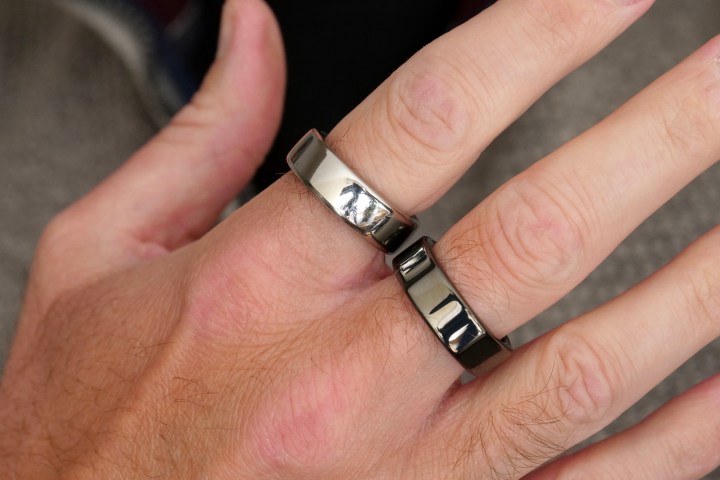
Wearing and using both may sound like overkill, but you’re not really doubling up on that much functionality. However, you’re only having to wear two devices because of the Oura Ring’s slightly limited feature set. On the more positive side, another consideration is if you’re like me and often wear a traditional non-smart watch, the Oura Ring is great as it doesn’t take up valuable wrist space, yet it still allows health and activity tracking.
The app contains a section on guided meditations and mindfulness sessions, which is a nice addition as these are more usually found in separate, paid apps. However, the lack of a comprehensive search function means it’s difficult to find what you want. The titles are too flowery to be informative, there’s no information on whether it’s a male or female voice, and no way to sort by the person guiding the session either. If you want to quickly find a new session by someone you like when trying to sleep, it’s frustrating, and that defeats the objective.
Oura Ring: women’s health

There are some features I can’t personally try out, but they are definitely worth highlighting. The Oura app includes period prediction, which it estimates based on body temperature. I have personally seen how accurate the Oura Ring’s body temperature measurements are, as it accurately caught my raised temperature that was bought on by illness and a vaccine.
The temperature sensor also links the Oura Ring to the Natural Cycles birth control app, which removes the need to manually check and enter your temperature into the app. Natural Cycles is both Food and Drug Administration (FDA) and CE approved, and the Oura Ring’s integration meets those standards. Oura also notes no sensitive data is shared between the apps. The Oura Ring has some competition in this area, as Movano’s Evie smart ring has been designed and built specifically for women, although it did not perform well in our review.
Oura Ring: battery life and charging
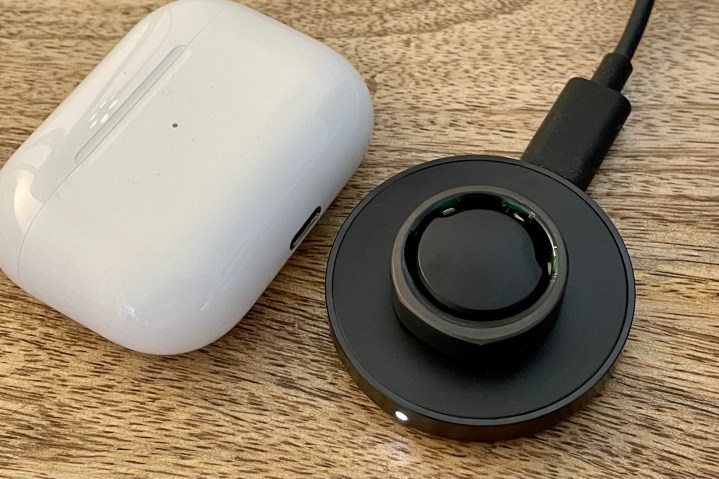
I’ve never experienced any battery anxiety with the Oura Ring, and I don’t think the battery has depleted more than once or twice. I don’t really think about charging it at all. How many wearables can you say that about? Surprisingly for such a small device, the battery life extends to around four or five days use with 24-hour-a-day wear, blood oxygen sensing, heart rate monitoring, and a 30-minute workout tracked up to twice during that period. This is lower than Oura’s expected seven days, but still perfectly adequate.
Now I’m several years into using the 3rd generation Oura Ring, the battery has not shown much evidence of degradation, and it still returns the same four to five days use. It’s not the length of the battery life that makes the Oura Ring so convenient though, it’s the way you charge it. A custom plinth matched to the size of your ring is supplied, and I keep mine by my bed. Most mornings, I place it on the charger while I shower and get ready for the day, and this keeps it topped up with no meaningful interruption to wear time. It becomes a habit, and entirely removes any need to monitor how much battery life remains.
Oura Ring: price and subscription
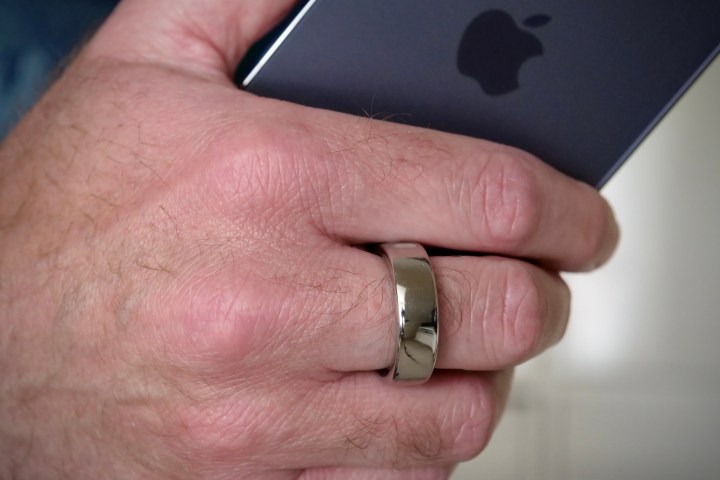
The cost of Oura Ring ownership varies depending on which style and finish you choose, plus it requires an ongoing subscription to continue seeing all the data in the app after a fixed period of time. The Heritage style starts at $299, while the Horizon starts at $349. This includes a single month’s access to the data in the Oura app, a change from the six months free access that used to be included with the ring.
The subscription costs $6 per month, and if you don’t pay, the app only shows your Readiness, Sleep, and Activity scores. Understanding the eventual cost of owning and fully using an Oura Ring is important. Over two years, the Oura Ring will cost a total of $487 if you choose the most expensive finish. For comparison, an Apple Watch Series 8 starts at $399, but does not require any further subscription.
The Oura Ring is one of the best pieces of wearable health tech I’ve ever used.
The subscription is a barrier to ownership. It’s not that the Oura Ring doesn’t provide good value — the data shown is well-presented, interesting, and easy to interpret. The app is also one of the best designed that I’ve used, certainly for a wearable, so you are getting a very high-quality product, plus more features are being steadily introduced these days. The problem is, Garmin, Apple, Samsung and others provide their apps and data analysis for no additional charge.
What about other smart rings?
When I first reviewed the third-generation Oura Ring, it did not have any well-known competitors, but this has changed over the last year. However, none have usurped the Oura Ring as our top smart ring recommendation. The RingConn Smart Ring is the only one that has really come close to the Oura Ring for me, while others have ended up preferring it after trying it out. It’s certainly better than the overly complex Ultrahuman Ring Air, which I also let a friend wear to get his impression of it, and his findings were very interesting and unique. If you want more information, I compared the Oura Ring to the RingConn Smart Ring and then to the Ultrahuman Ring Air.
The Oura Ring, RingConn Smart Ring, and Ultrahuman Ring Air are all better than the Circular Ring Slim, which failed to live up to expectations and disappointed a great deal. Unfortunately, the same thing happened with the Movano Evie Ring despite considerable promise ahead of its release. At the time of writing, the Oura Ring is the smart ring to buy — but what about the Galaxy Ring? It looks very promising, but we still need to test and review it to know how it stacks up. If you like the look of the Oura Ring, I don’t think you’ll be disappointed if you buy it.
Should you wear the Oura Ring?
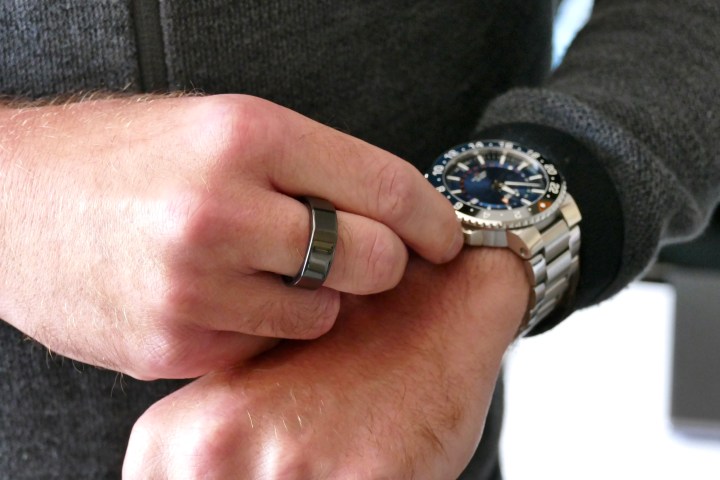
The Oura Ring is one of the best pieces of wearable health tech I’ve ever used. It’s really superb, and fits my lifestyle and requirements very well indeed. I genuinely have no reservations recommending the Oura Ring as a product at all. However, the subscription irks, because it’s hard to see exactly where the additional benefits are compared to free services that also analyze and compile your data.
It also makes this an expensive product, with the ownership bill closing in on $500 for two years of use and $72 each year after this. If the feature set was comprehensive enough that I didn’t feel the need to also use another fitness tracker, then it may be slightly better, but as it is, I need to wear a smartwatch or a Fitbit to truly quantify all my activity and health. I’m not saying this stops me from recommending the Oura Ring, but it really is an important consideration.
The Oura Ring is a very sticky product, and the amount of time I’ve worn it is a testament to its style, quality, usefulness, and convenience. If you want a beautiful wear-and-forget device that delivers interesting and helpful health data, and you don’t mind paying a monthly fee to access it, then it’s absolutely perfect.


